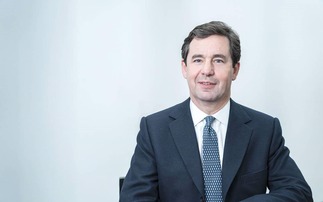
Investing is a nuanced endeavour, with periods of conducive conditions and evolving challenges. Over the past four decades, investors experienced a golden age, but today, adaptation is key as we navigate a changing landscape. This article explores the depth and breadth of the investment universe, highlighting opportunities for diversification, enhanced returns, and risk reduction.
The investment universe is vast and often underestimated. Understanding its development is crucial, with Modern Portfolio Theory (MPT) marking a significant milestone in the 1950s. MPT introduced the concept of diversification, emphasising the importance of spreading risk across assets.
In search of further opportunities
The challenges that confront investors today - and those that are likely to confront them in the future - demand a more creative and flexible view of portfolio construction and asset allocation. The investment universe affords opportunities to achieve this both within traditional asset classes and beyond them.
Diversification within traditional asset classes
Many investors cast their net no wider than equities and bonds. What is regularly overlooked is that diversification opportunities exist even within these most conventional of asset classes.
Examples include global smaller companies, which tend to outperform their large-cap counterparts over the long term; high-yield bonds, which can be riskier than other bonds but have a potential advantage in shorter duration; and emerging market debt. The last of these offers a means of tapping into structural growth in the developing world, which is home to a burgeoning middle class and numerous promising export markets.
Diversification beyond traditional asset classes
If we look beyond equities and bonds, of course, the investment universe really opens up. Non-traditional diversification opportunities include real estate, which has often provided mitigation against the effects of inflation, and hedge funds, which can augment non-correlated returns but require full transparency around processes and objectives.
Commodities are another option. They can be particularly useful in turbulent times, as highlighted by the investment performance of energy resources - oil and natural gas foremost among them - in the wake of the crisis triggered by the invasion of Ukraine. They are sometimes perceived as vulnerable to the transition to a green economy, yet the attractions of many commodities - the metals needed to make batteries for electric vehicles, for instance - are likely to grow in light of this shift.
Crucially, this kind of "bigger picture" thinking can be captured in portfolio construction across multiple risk profiles. Breaking free from an allocation consisting of a single type of equity, a single type of bond and maybe some cash should appeal even to a relatively risk-averse investor, because diversification is, above all, a means of reducing risk.
Ultimately, the investment universe should be treated as a toolkit. The larger a toolkit is, the better equipped it is likely to be in coping with difficult situations. It may not be necessary to use all the tools, but it is good to know they are available.
Beneath the surface
Once a multi-asset portfolio has been constructed, investors need to truly understand what they own. Not least amid the challenges of the post-golden age, one reason for this is that a portfolio may contain hidden biases that could impact performance. Below are some key considerations of which investors should be aware.
Sensitivity to interest rates
There is a proven market phenomenon known as the duration effect. It describes the relationship between rising interest rates, bond duration and falling prices. Basically, the longer the duration, the further a bond's price is likely to drop if interest rates go up. This explains, for example, why defined benefit pension schemes holding ultra-long-duration assets have suffered. What qualified as a safe haven in the past might be something rather different now.
ESG-based structural bias
Almost all investments now take account of environmental, social and governance (ESG) considerations, but some portfolios can be structurally skewed as a result. The problem is that many ESG funds exclude particular sectors - say, those that are carbon-intensive - and are therefore overweight in sectors such as technology, which have good ESG scores. Beware a consequent bias towards growth, as growth-focused sectors can be vulnerable to something similar to the duration effect.
Style/factor exposure
Relatedly, interest rates can also influence which investment style - or "factor" - outperforms. Growth was the factor of choice when rates were low, while value came into its own when rates began to rise. Although there is no right or wrong answer per se, investors should be alert to any strong skew a portfolio might have towards a specific style. Remember: factors can play a substantial role in both outperformance and underperformance.
Market-cap positioning
Many investors in equities know only the large-cap end of the market-cap spectrum. This is undoubtedly the case for those investing solely in major indices, which are dominated by the world's biggest businesses. This lack of diversification can be painful if circumstances should lead many large-cap companies to underperform. Opportunities elsewhere on the spectrum can be attractive, especially for investors with a long-term outlook.
Home bias
Home bias - the tendency to invest the majority of a portfolio in domestic assets - has been called one of the principal puzzles of international macroeconomics. It is a puzzle many investors are still wrestling with today. A 2022 Invesco study centred on the UK, Switzerland, Germany, Italy and the Nordics found domestic assets accounted for 18% of equities, 30% of fixed income and 50% of property holdings. Geographic diversification can help mitigate the risk of regional underperformance.
Sensitivity to the developing world
Emerging markets (EMs) offer opportunities to invest in structural growth, as mentioned earlier, but investors should keep in mind what is sometimes known as the US dollar effect. The US dollar has been shown to be inversely correlated with EM equities, meaning EMs tend to underperform when the dollar is strong - as has been the case of late - and outperform when it is weak. This is why investors should give thought to the magnitude of a portfolio's sensitivity to the developing world.
The currency effect
Currency can be a powerful driver of returns - or the lack of them. The weakness of the pound in 2022 benefited unhedged sterling investors by cushioning the impact of falling equity prices, as demonstrated by the respective declines of sterling-dominated and dollar-denominated investments in the MSCI All Country World Index - but a strong pound could have the opposite effect. The management of a portfolio's currency exposure is likely to become increasingly important in the years ahead.
Conclusion
Recognising the breadth and depth of the investment universe is crucial for constructing resilient portfolios. Diversification within and beyond traditional asset classes offers opportunities to navigate uncertain markets. Understanding hidden biases and actively managing portfolios are essential in today's evolving landscape.
Find out more
Invesco's heritage in managing multi asset investments for our UK clients goes back over 25 years. Explore our range of discretionary and advisory model portfolio services, which consider the topics discussed in this article, and turn our expertise into your edge.
Investment risks
The value of investments and any income will fluctuate (this may partly be the result of exchange rate fluctuations) and investors may not get back the full amount invested.
Important information
This article is for Professional Clients in the UK and is not for consumer use.
Views and opinions are based on current market conditions and are subject to change.
This is marketing material and not financial advice. It is not intended as a recommendation to buy or sell any particular asset class, security or strategy. Regulatory requirements that require impartiality of investment/investment strategy recommendations are therefore not applicable nor are any prohibitions to trade before publication.
Invesco Asset Management Limited, Perpetual Park, Perpetual Park Drive, Henley-on-Thames, Oxfordshire RG9 1HH, UK. Authorised and regulated by the Financial Conduct Authority.












